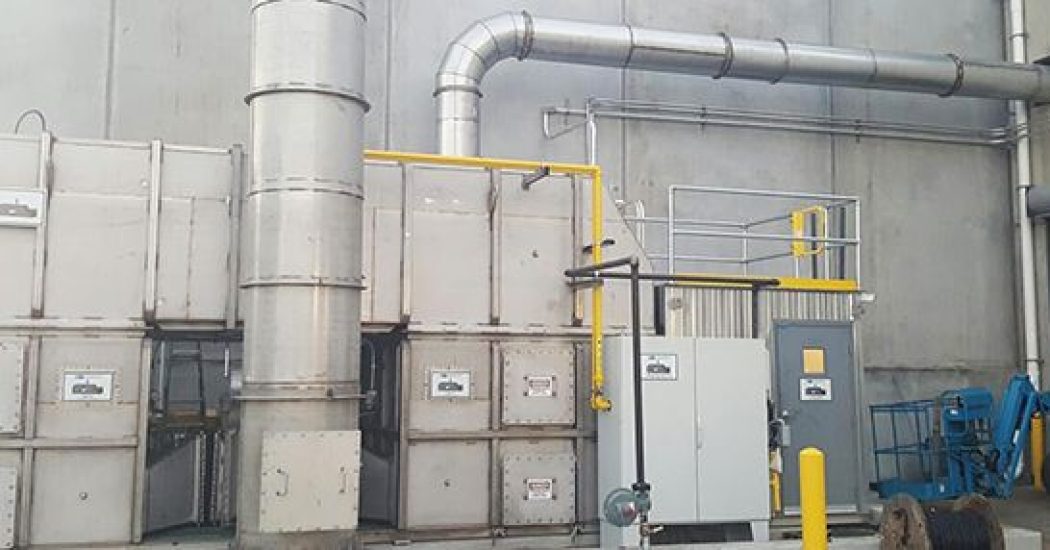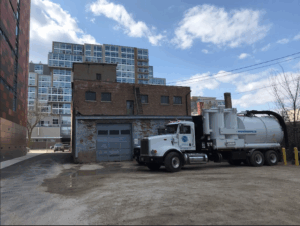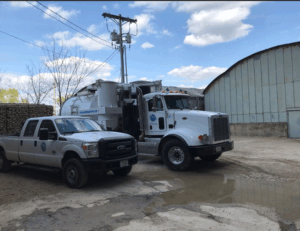Does your industrial facility use a Regenerative Thermal Oxidizer (RTO) to help meet EPA air pollution compliance standards? If so, you are probably aware that your system will need its heat exchange media cleaned or replaced, at some point in time, in order to perform properly and operate at peak efficiency.
When that time comes, you will be glad to know that Great Lakes Power Vac (GLPV) has extensive experience providing high-quality, industrial vacuum and cleaning services to assist in your media replacement efforts.
EFFECT OF MEDIA BUILD-UP, DEGRADATION, OR EROSION ON RTOS
Depending on the nature of the process airstream constituents, RTO ceramic media can experience a variety of issues over time, including:
- Degrading/Eroding (due to acid gases)
- Becoming Masked
- Getting Plugged or Fused by Particulate Materials (either present in process inlet airstream or as byproducts of the combustion process)
One common inorganic deposit that often forms inside the ceramic media is silicon dioxide (aka silica). This particulate deposit can take the form of a sticky, white powder or a hard glass-like material that agglomerates and plugs your air pollution control device causing it to lose heat recovery effectiveness.
Once your RTO becomes plugged or begins to degrade, some (or all) of the ceramic media must be removed from the beds and replaced with fresh material. Fortunately, at this stage, GLPV has a great deal of expertise to help you quickly and effectively resolve the issues you face.
KEEP YOUR AIR FLOWING FREELY AND CLEANLY WITH ROUTINE CLEANINGS
The process of removing the ceramic media from an RTO varies greatly from one facility to the next and cleaning requirements can range from months to years apart (depending on your applications). In general, there are several factors to consider:
1) Type of Ceramic Media Used
Is your unit equipped with loose ceramic shapes (also known as “saddles”)?
If so, the media is loose, it can typically be vacuumed from the RTO beds with relative ease, unless the saddles are fused with a sticky particulate or with resinous deposits in which case some mechanical force may be necessary to break up the media into vacuumable pieces.
Or is it a structured media that looks like honeycomb blocks or corrugated plates?
If so, this type of media either needs to be broken up with pickaxes or chipping hammers or, in some cases, removed by hand one block at a time.
2) Is Confined Space Entry Needed?
Most RTOs include access doors on the tops or sides of the combustion chamber which are located above the media beds or towers.
Depending on the size of the beds and the type of ceramic media and its condition, Confined Space Entry may be required in order to remove the material.
At GLPV, we have years of experience with this type of work and are well-versed in Confined Space Entry protocol.
3) Waste Media Management
In most cases, spent media is relocated into “low-boy” dumpsters for ultimate disposal by our customers. If alternate arrangements must be made, we can assist in finding the right solution.
KEEPING YOUR RTO IN TOP CONDITION IS SIMPLE WITH GREAT LAKES POWER VAC
Once all of the factors above are considered, our crew will employ the best and most timely solution to your media removal application.
GLPV has the right equipment, tools, and experienced team to handle any scenario regarding your RTO system’s cleaning needs.
If you’re interested in learning more about how we can assist your facility with our industrial maintenance services, contact us online today or give us a call at 800-822-4887.







